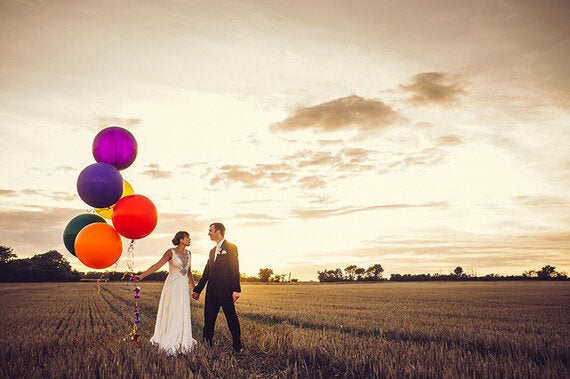
As a wedding photographer, I am really lucky to work with a really diverse range of couples.
Some are planning fairly classically traditional days and others are throwing the rule book out of the window.
What unites my wedding photography clients is that the majority of them have examined the elements that make up a "traditional" wedding day to work out what parts of it are meaningful or important to them as a couple.
Today I'll be looking at some traditional elements of the wedding day and how they came to exist, as well as suggesting some alternatives and ways that you can personalise those traditions to make sure they truly reflect you.
Most of these traditions emanate from heterosexual weddings but many of the traditions can be easily adapted to suit gay couples, whether you want to take a more traditional or alternative approach. I'll be including some ideas about how to adapt traditional wedding elements to suit a gay wedding.
The marriage proposal
I love a good proposal story. One of the questions I always ask potential clients is "how did you get engaged?".
My own proposal was pretty lovely, with Pete arranging a champagne picnic on the roof of our building and proposing as the sun set over London. He even asked for my parents (and especially my dad's) 'permission', which was really important to me even though it was at odds with my own feminist convictions. I knew it make my dad really happy to be asked.
Traditional
In Western cultures it's traditional for the man to propose to the woman, often down on one knee, clutching a big sparkly engagement ring to seal the deal. The ring should cost the equivalent of at least one month's salary. The man will often plan the proposal, consulting with the bride's father to ask for permission, and arranging the setting. Traditional proposals range from the super simple to the elaborately planned.
Alternative
There is absolutely no reason why it should be the man that does the asking. Aimee, one of my brides from last year, proposed to her now husband Dennis.
"Den had dropped in to conversation a few times at various dinners, 'So, shall we get married?' Or something not to dissimilar to these words. I wanted this to be a memorable experience as I hoped that I would only ever do it once! So.....For Valentines day, I made Den a big love heart made of pin badges that related to me and him and left a space. I told him I wanted to buy an 'I LOVE N Y' badge from New York when went towards the end of February. I then had a handmade button created saying 'Marry Me?'. On the 29th of February, I gave him the badge and surprised him with Champagne and a lovely breakfast on a table full of heart plates, confetti, and roses"
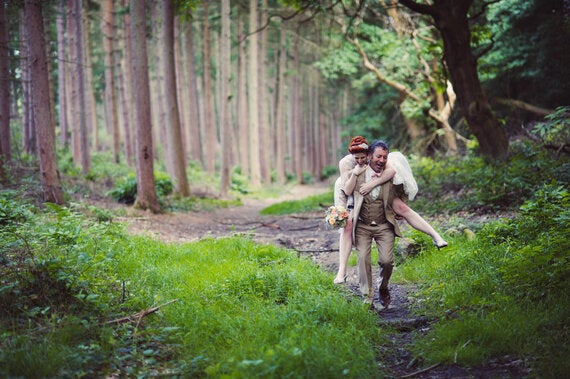
If you're a gay couple, you can always create your own ritual, like Kate and Camilla did, and ask each other. These's something lovely about the idea of planning your proposal together:
"As two women we both had ideas and wishes in our head of being proposed to. Clearly, with two of us, this wasn't going to happen. One had to ask the other, or we needed to ask each other. And that's what we did. We decided to combine our summer holiday in Ibiza as the setting for our engagement. We spent a day in central London buying each the rings and then put them away for a few months until a bright, starry night on a beach, the waves lapping on the shore. Asking each other, we celebrated with champagne and kisses"
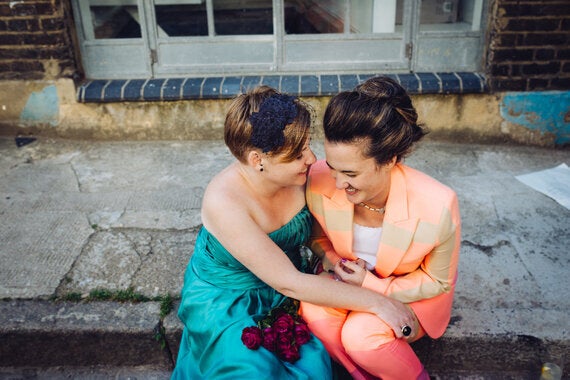
The clothes
I think one of the reasons I still love weddings, even after having been to more than 1oo of them, is the fact that they are all so different. One week I'll be at a village fete type wedding with no dress code and the next I'm at a classic affair in a castle, with the grooms men in morning suits. It's lovely to see such different approaches and the way couples put their own spin on things.
Traditional
It's traditional for the bride to wear white, as an indication of her purity. Queen Victoria is credited for starting the enduring trend of wearing white on your wedding day and the majority of the brides I photograph still do opt for white or cream.
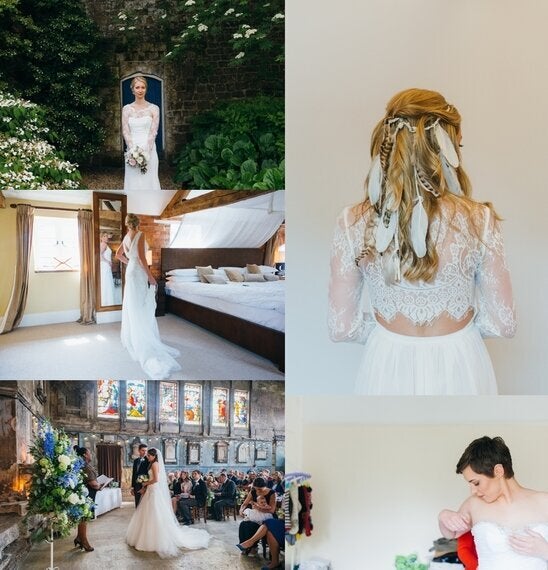
Morning dress or lounge suits are usually the traditional choice for the groom and grooms men.
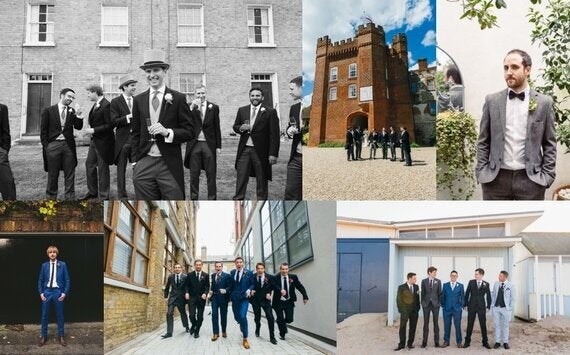
Of course it is perfectly possible to put your own spin on your suits with accessories like button holes, or you can keep things really relaxed by having everyone in mismatched suits.
Alternative
The alternative, of course, is to wear what you like and tell guests to do the same. Most people quite like buying something new - a special outfit - for their wedding. Putting on clothes that you have never worn before gives it a sense of occasion. There is nothing that says it has to be a white dress or suit though. You could rock up in an awesome Hawaiian shirt like Owen, a top hat in an alternative style like Colin, a vintage inspired dress like Laura, a neon suit like Camilla (above) or a dress with rainbows on like Kerry.
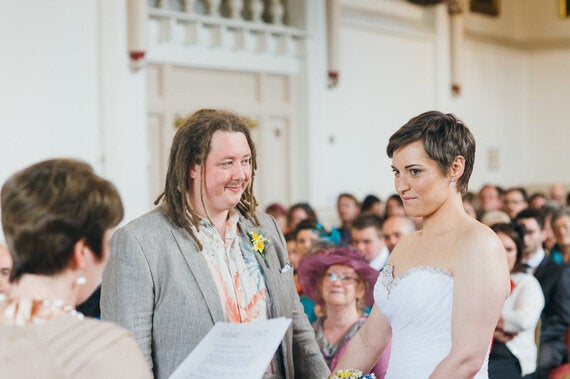
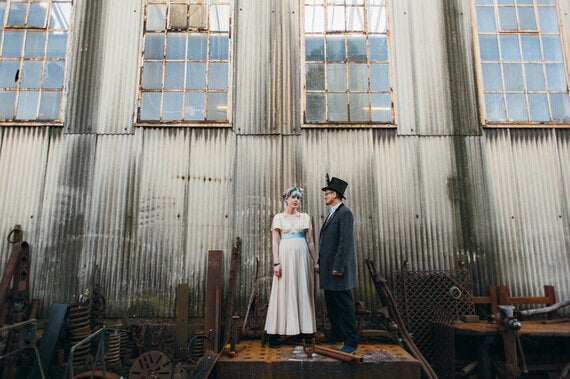
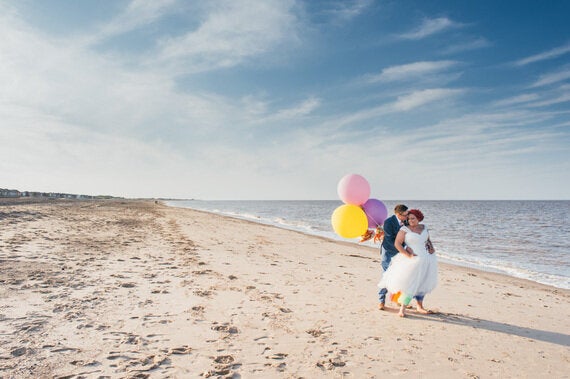
If you're a same sex couple you could choose to wear one element of your outfit that compliments each other's, like buttonholes or a bouquet, wear matching outfits or wear something completely different from each other.
Basically wear what ever makes you happy.
Being Given Away
As a feminist the idea of being given away always sat really uncomfortably with me. This, combined with the fact that my dad hates being the centre of attention, meant that Pete and I decided to walk up the aisle together. We loved the idea of walking up the aisle, towards our friends and family, as a couple, ready to make a life long commitment to each other.
Traditional
The tradition of giving the bride away stems from the days when the bride would literally be given from the possession of her father to the possession of her husband. Luckily most of us don't view it in this way any more and it's more of a symbolic ritual between father and daughter.
In most ceremonies, whether religious or civil, there is room for negotiation regarding the language that's used.
I especially liked this suggested response to the question "who gives this woman"
"She gives herself freely, with our blessing"
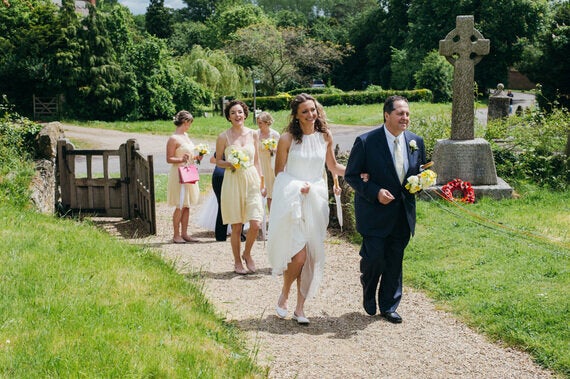
Alternative
Pete and I walked up the aisle together and then our ceremony officiant ask both sets of parents to give their blessing to the marriage.
You could skip this bit all together and just arrive at the same time as your guests, like Steve and Andy did. There was still a walking in moment, as they both had to go through some formalities with the registrars before hand, but it was much more relaxed when they did come in as they'd both already had a chat with their guests.
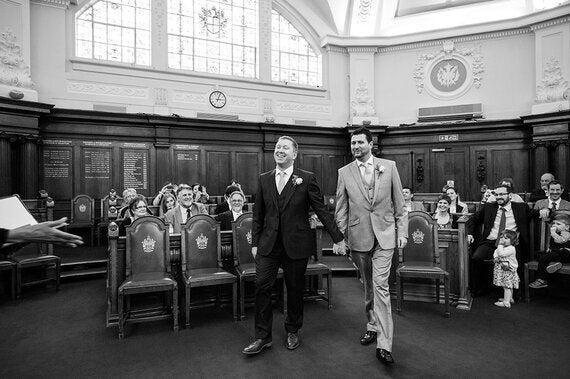
Alternatively you could ask one or both parents to walk each of you down in turn.
Sally's mum walked her up the aisle at her wedding to Tom.
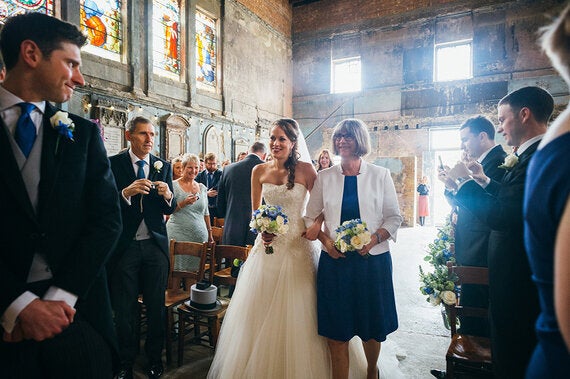
The ceremony
At the moment in this country you are limited in terms of locations where you can get married. You can either marry in a venue licensed for civil wedding ceremonies or a religious wedding can take place at a church, chapel or other registered religious building.
Traditional
For the purpose of this article I am going to call both religious and civil ceremonies "traditional" as they both follow a standard format. Of course you can personalise them as much as you like with readings, performances and music, subject to the flexibility of your ceremony officials.
Katie and Jerry had a beautiful, traditional Catholic wedding ceremony and their gospel choir had the whole congregation either singing along or tapping their feet.
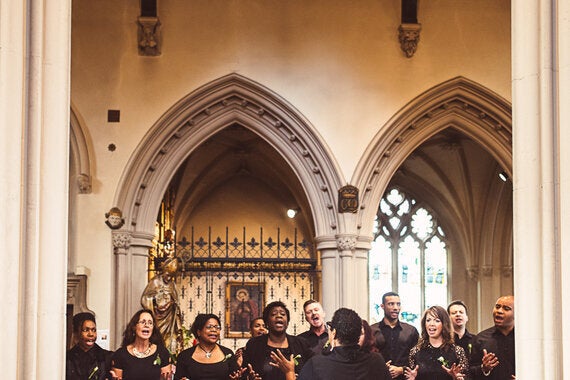
Sarah and Ross had a surprise singalong of All You Need is Love during their civil ceremony at Islington Town Hall.
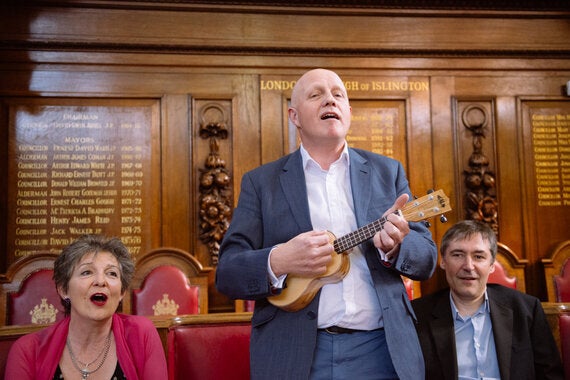
Vic and Rich had their performer friends act out an excerpt from A Midsummer Night's Dream.

Alternative
If the fixed format of a traditional church or civil ceremony is too restrictive, there are a couple of ways that you can have exactly the ceremony you want.
If you choose to treat the "legal bit" of the ceremony as a formality and pre-curser to the actual wedding day, you can pretty much have what ever kind of ceremony you like.
Pete and I went to the registry office, together, with our immediate families, on the Monday before our wedding. We then went for afternoon tea. It was lovely. On the day of our wedding, because we were already legally married, we were able to ask a friend to act as our officiant and we wrote the ceremony entirely ourselves.
Many other couples choose to do the same and people like the brilliant team at One Life Ceremonies can help you to create a wedding ceremony that reflects you, and everything you want to say.
You could also choose to marry somewhere like Scotland, where it's the ceremony official that's licensed, rather than the venue.
Missy and Yoni wanted to create their own ceremony, that reflected Yoni's beliefs as a Jewish person and Missy's humanism.
"When it came to our ceremony we tried to include everything that we believed in and leave out anything that we didn't understand or didn't agree with. As our ceremony was a mix of Jewish and secular values - broadly a Jewish structure with humanist content - we tried to honour both of our cultures the best we could. Our Rabbi was amazingly accommodating and creative and that made it much easier for us to create something that really spoke to both of us. We said secular vows that we wrote ourselves in Hebrew and in English, and asked family members to create 7 blessings for us inspired by the Sheva Brachot. We also had our vows put together in a ketubah-style document to sign as part of the ceremony and added a blessing for equal marriage over wine"
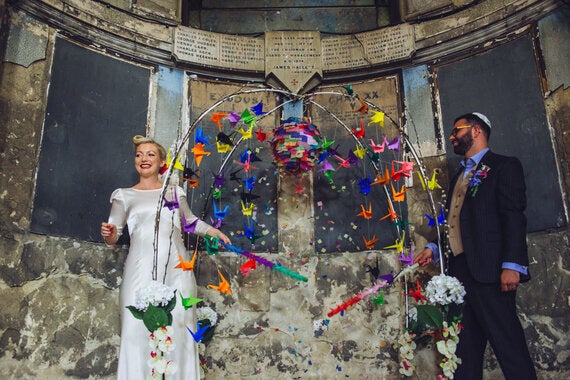
And Elise and Sam decided to do the legalities before their wedding and then officiate the ceremony themselves on the day of the wedding!
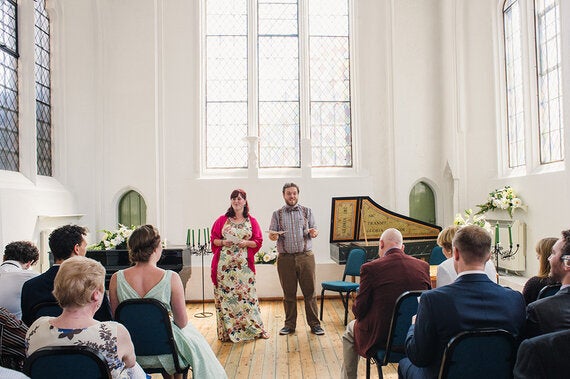
Other Traditions and how to personalise them
Bridesmaids and ushers
There is no reason in the world why your ushers have to be male and bridesmaids have to be female. Mix it up and have a brides man or two or some female ushers.
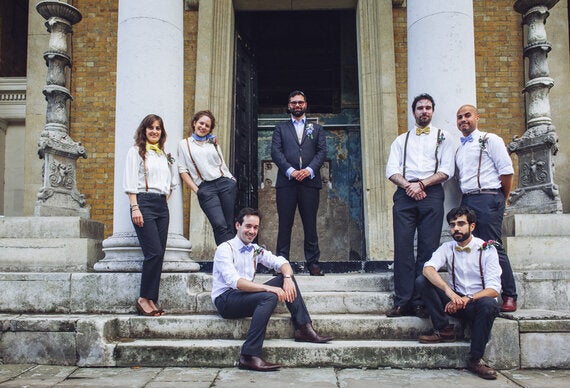
Speeches
Decide who you'd like to speak. You can follow the traditional formula of Father of the Bride, Bridegroom and Best Man, or a variation of that if there is no bride because you're having a same sex wedding. You might prefer to ask a selection of representatives to say a few words. For example one person representing each family, a close friend of each party and the couple themselves.
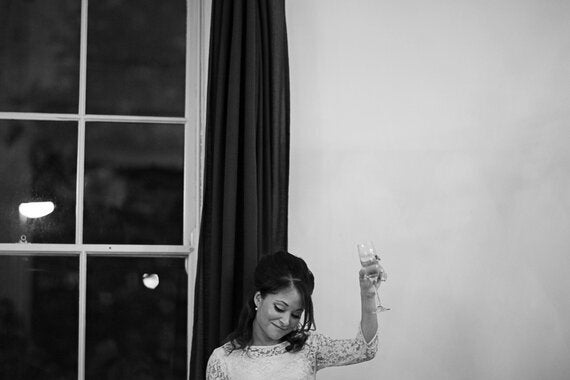
You may decided to dispense with speeches entirely. Or do something very cool like Su and Owen did and have an open mic session, where friends and family are invited to perform.

Confetti
I love it. Let's never get rid of it as a tradition. It looks awesome on camera (assuming you have a good quantity. And that it's not a hideously windy day!).
Stick with biodegradable or real flower petals (although be prepared to be picking it out of your hair for weeks if you plump for petals) for the sake of the environment. Confetti canons look amazing but they make quite a mess.
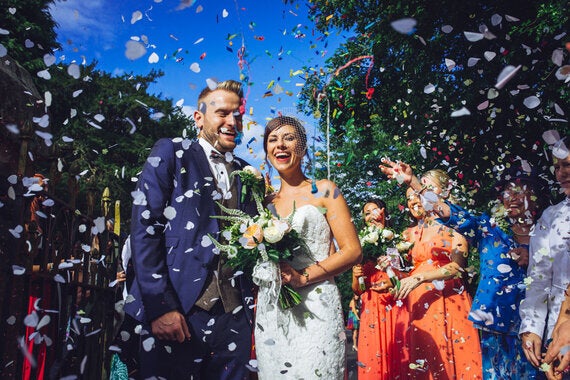
As an alternative use bubbles or make pretty DIY ribbons on sticks like Pete and Natasha did and ask your guests to wave them as you walk back down the aisle.
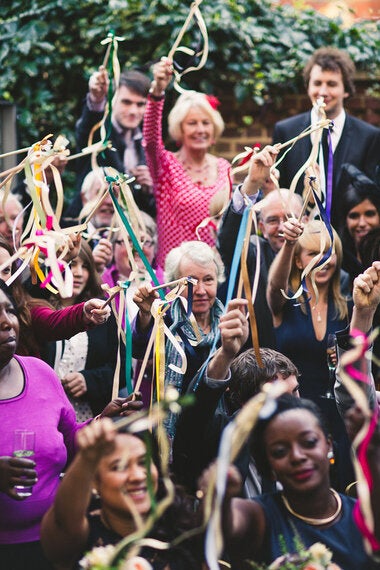
The receiving line
This gets a bad rap and is often dismissed as being stuffy and formal. Personally I think they are a great way of making sure you have properly said hello to each of your guests, so you can enjoy your dinner and the rest of your party without worrying about offending/missing someone.
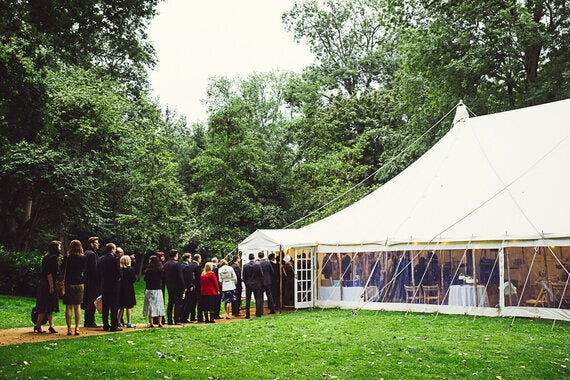
Create your own tradition
I loveeeed this at Rob and Ashley's wedding. Every 10 minutes or so, during dinner, a table would pop up and start singing. Such fun.
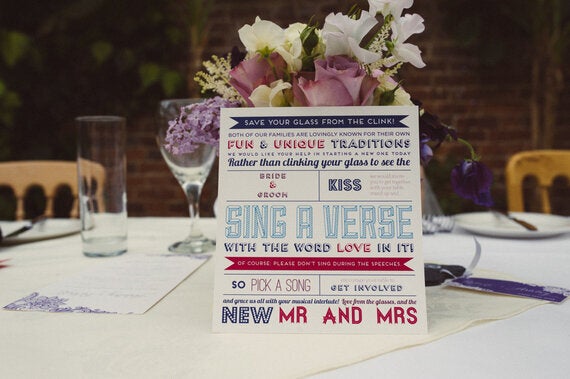
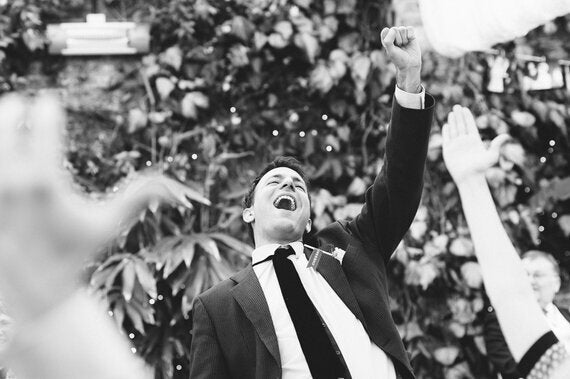
So there you have it. Some wedding traditions and ways of making them your own. Are there any other traditions you are struggling with?
Laura Babb is a creative wedding photographer in Walthamstow, North London. Babb Photo provides artistic documentary wedding photography across the UK and Europe.